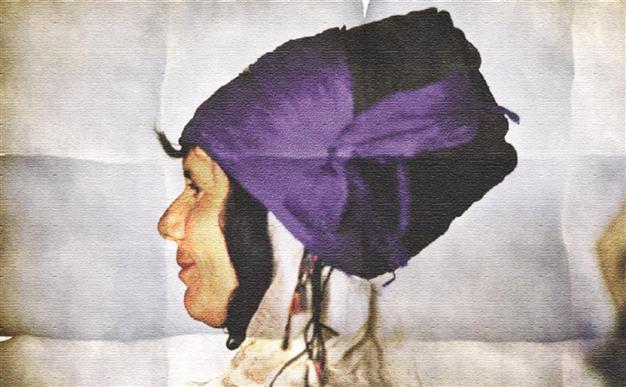Research center opens with a look at Anatolia
EMRAH GÜLER ANKARA - Hürriyet Daily News

The photos have been digitized and cataloged by Koç University’s Suna Kıraç Foundation. Now, a selection of these photographs, taken over a span of two decades, is ready for art and culture aficionados as part of an opening exhibit.
Josephine Powell was one of the most prominent documenters of Turkey’s recent history and its transformation after the establishment of the republic in early 20th century. Having visited Turkey for the first time in 1955 to photograph Byzantine mosaics, she became a regular traveler in Turkey, photographically and academically documenting nomadic life. She was both a collector of Anatolian artifacts like flat-woven textiles, kilims and sacks, as well as a photographer of ethnography.
Until her death in 2007, Powell documented
Anatolia and its diverse ways of life in a collection of 30,000 photographs. Three months before her death, she left the entire collection to the Vehbi Koç Foundation. The photos have been digitized and cataloged by
Koç University’s Suna Kıraç Foundation.
Now, a selection of these photographs, taken over a span of two decades, is ready for art and culture aficionados as part of an opening
exhibition.
“What Josephine Saw: A Photographic Look at 20th-Century Rural Anatolia” also marks the opening of a research center hoping to create in Istanbul a center of intellectual standing focusing on the contributions of Anatolian civilizations. Koç University’s Research Center for Anatolian Civilizations (RCAC) was founded to support and disseminate research on Turkey’s history, increase the quality and quantity of research on the archaeology of Turkey, museum studies and heritage management, and also to increase the awareness of the contributions and interactions Anatolian civilizations have had with other major world civilizations.
RCAC is hoping to provide an educational forum, develop programs of documentation, preservation and conservation aimed at protecting the archaeological and cultural heritage of Turkey, and increase our understanding of contemporary Turkish culture and society by exploring the historical and archaeological record. In a press conference held last week to celebrate the official opening of RCAC and Powell’s exhibition, Koç University Rector Professor Umran İnan said one of the foremost goals of the university is “to support scientists and young scholars to preserve and protect Turkey’s cultural heritage.” He added, “Anatolia was home to many civilizations. Some of the finest works from philosophy and literature to architecture, and some of the most important cultural treasures of known history come from Anatolia. We are proud to unearth some of these treasures, and offer support to work that help carry these to future generations.”
RCAC Director Scott Redford summarized the mission of the center in a nutshell. “RCAC brings together scientists from various disciplines, and contributes in developing our understanding and awareness of Turkey’s history.” He also talked about RCAC’s devotion “to provide fellowship and scholarships for graduate students, to host conferences and symposia, to provide access to library archives, and now, to provide a space for accessing research results.”
Redford had a few things to say about Powell as well. “I met Josephine Powell in 1990. She continued working and cataloging the photos she had taken in her travels to Anatolia until she died. It’s an honor for RCAC to host her archive. With this fascinating opening exhibition, RCAC is bringing to life its mission to research Anatolia’s history through many dimensions, bringing forward the last piece in the picture.”
What Josephine will help us rememberAnother figure who met Powell in 1990 is the exhibition’s curator Kimberly Hart. She recalled how Powell had come to inspire her, and how she went on to curate the exhibition. Hart said she “came to realize that collecting architectural tools from Anatolia was one of Powell’s passions.” She said, “I was eager to help her. She was an interesting person, and I was curious. I have listened to stories from Josephine throughout the years, and those stories helped me a great deal when I was curating the exhibition.”
“What Josephine Saw,” consisting of 80 photographs, is a glimpse into her work and travels in Anatolia, with a larger selection of images from RCAC’s Powell Archive projected in the exhibition hall. You can also watch a documentary film, and those further interested in Powell’s collection can check the online connection to the entire archive holdings in Koç University’s Suna Kıraç Library.
As it says in the exhibition literature, “’What Josephine Saw’ offers the opportunity to see Anatolia through Josephine Powell’s eyes, as it is framed by her photographs, to remind us of what we have lost, and to help us remember it forever.”
